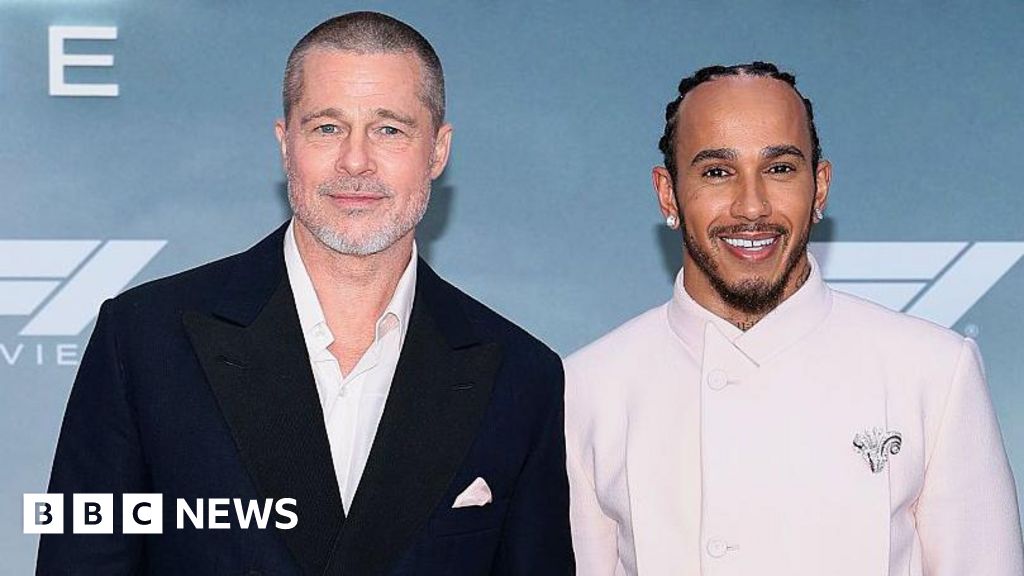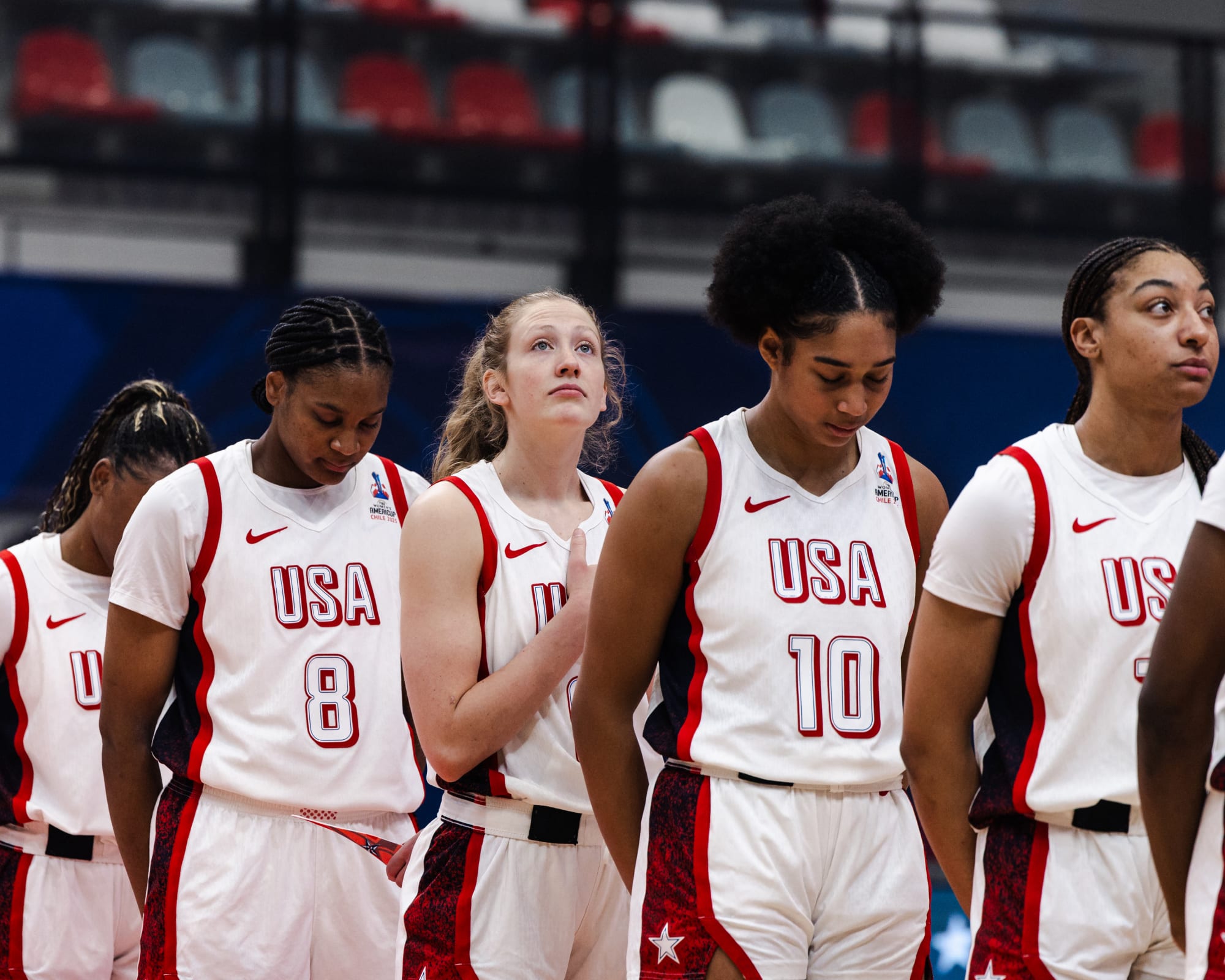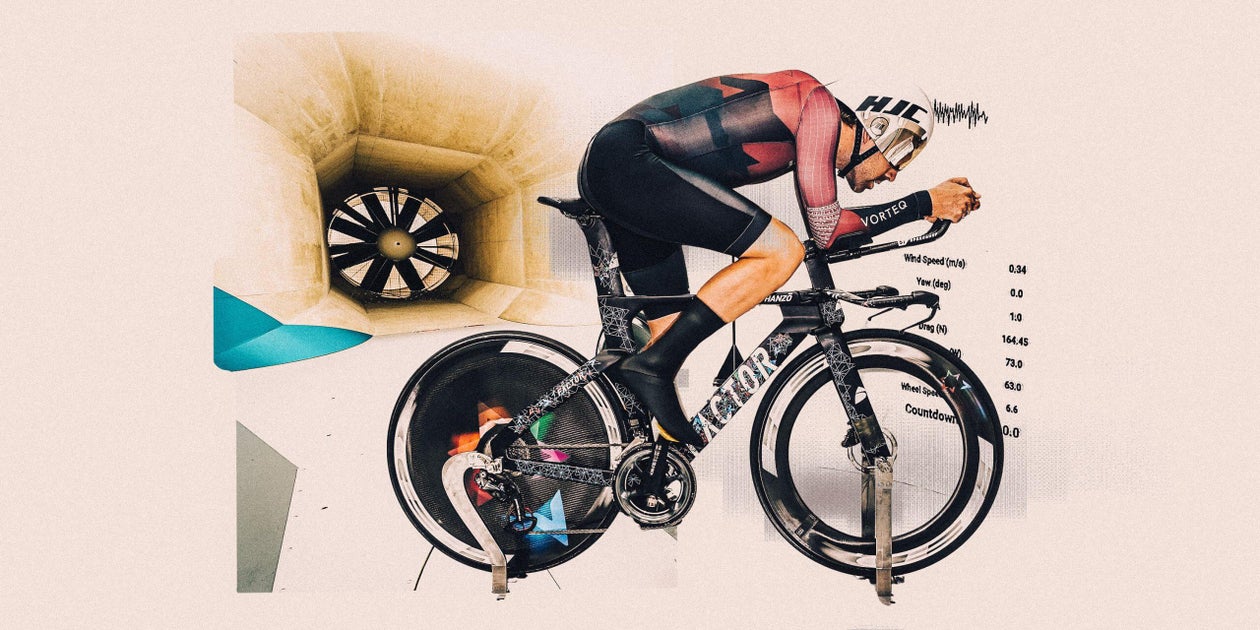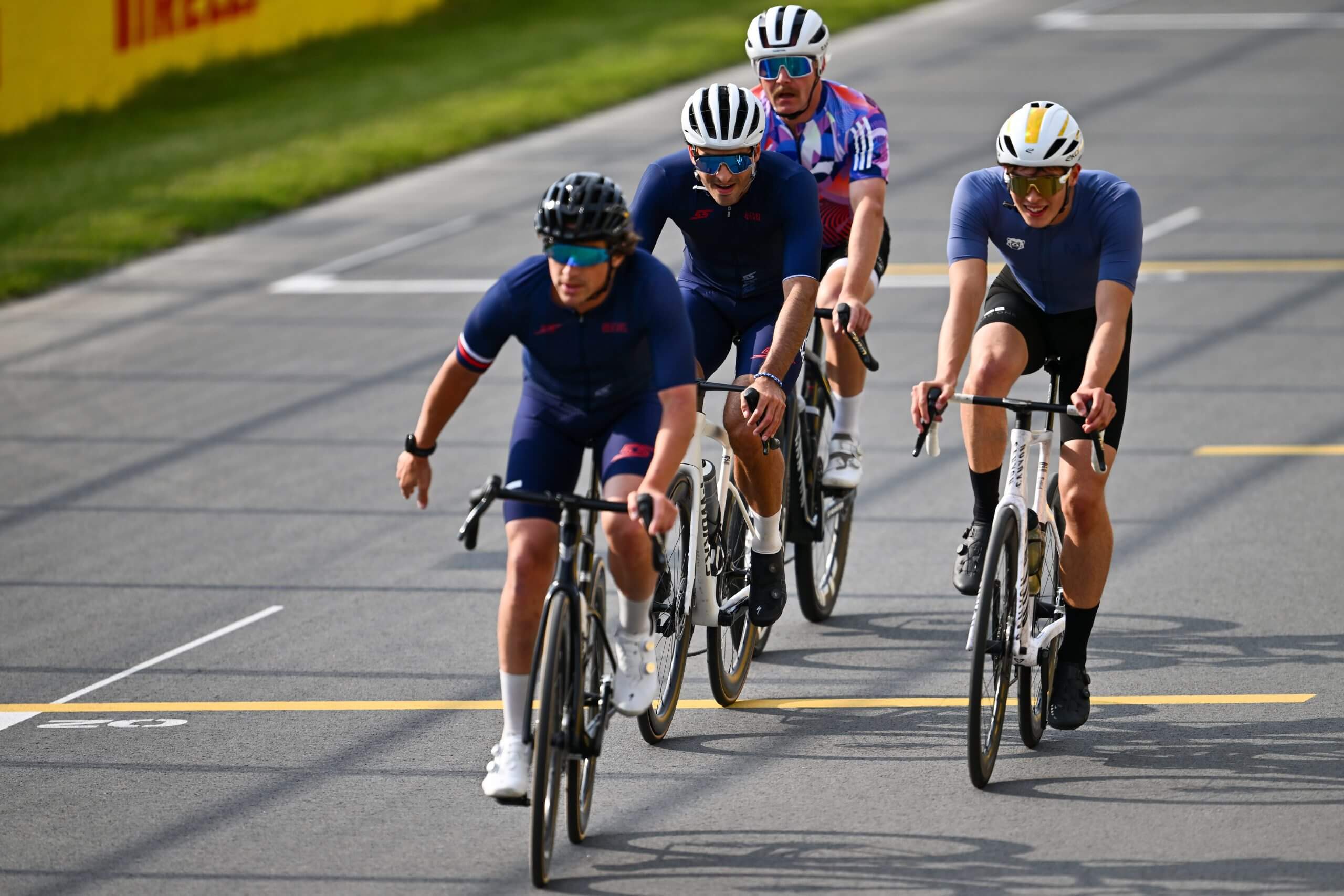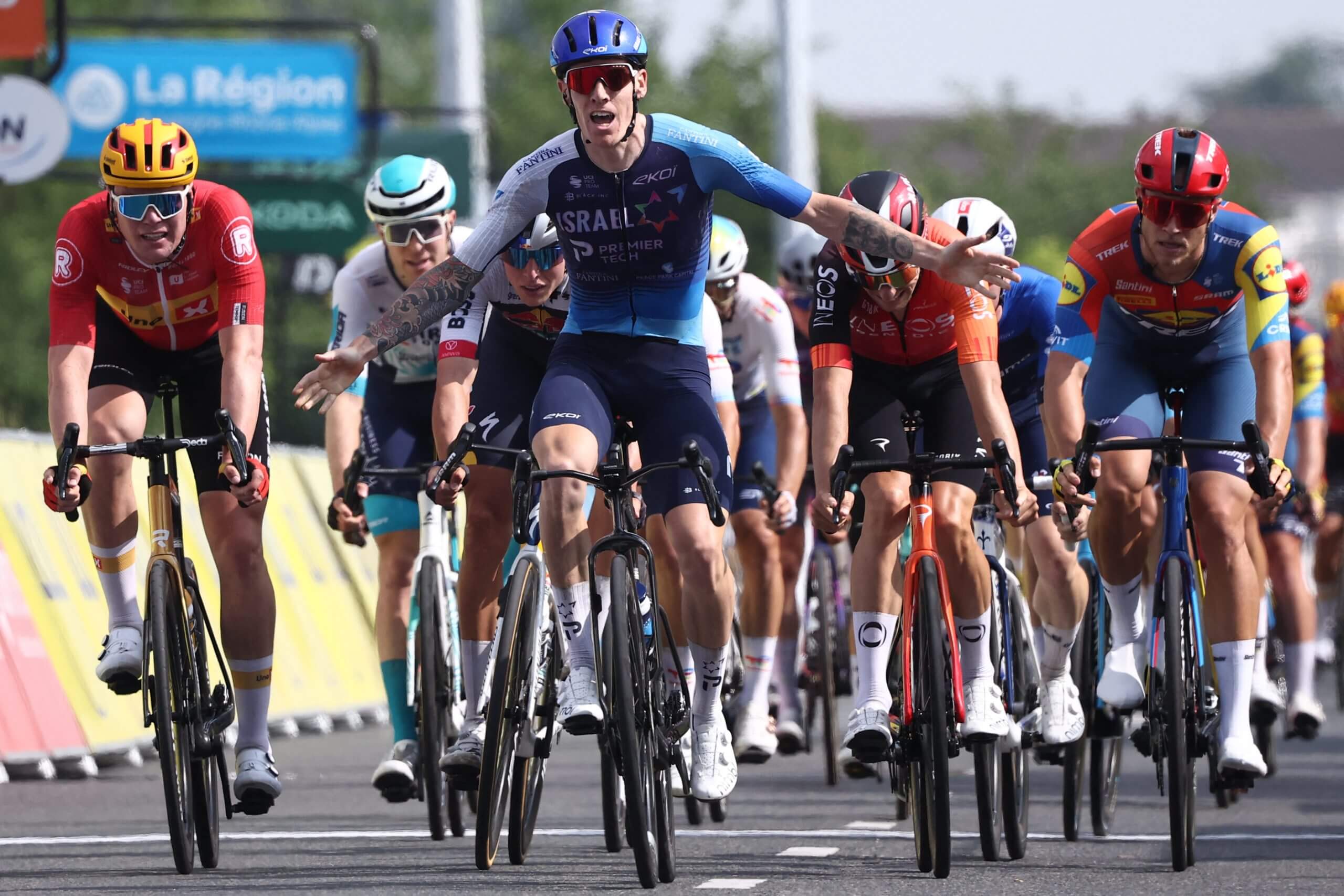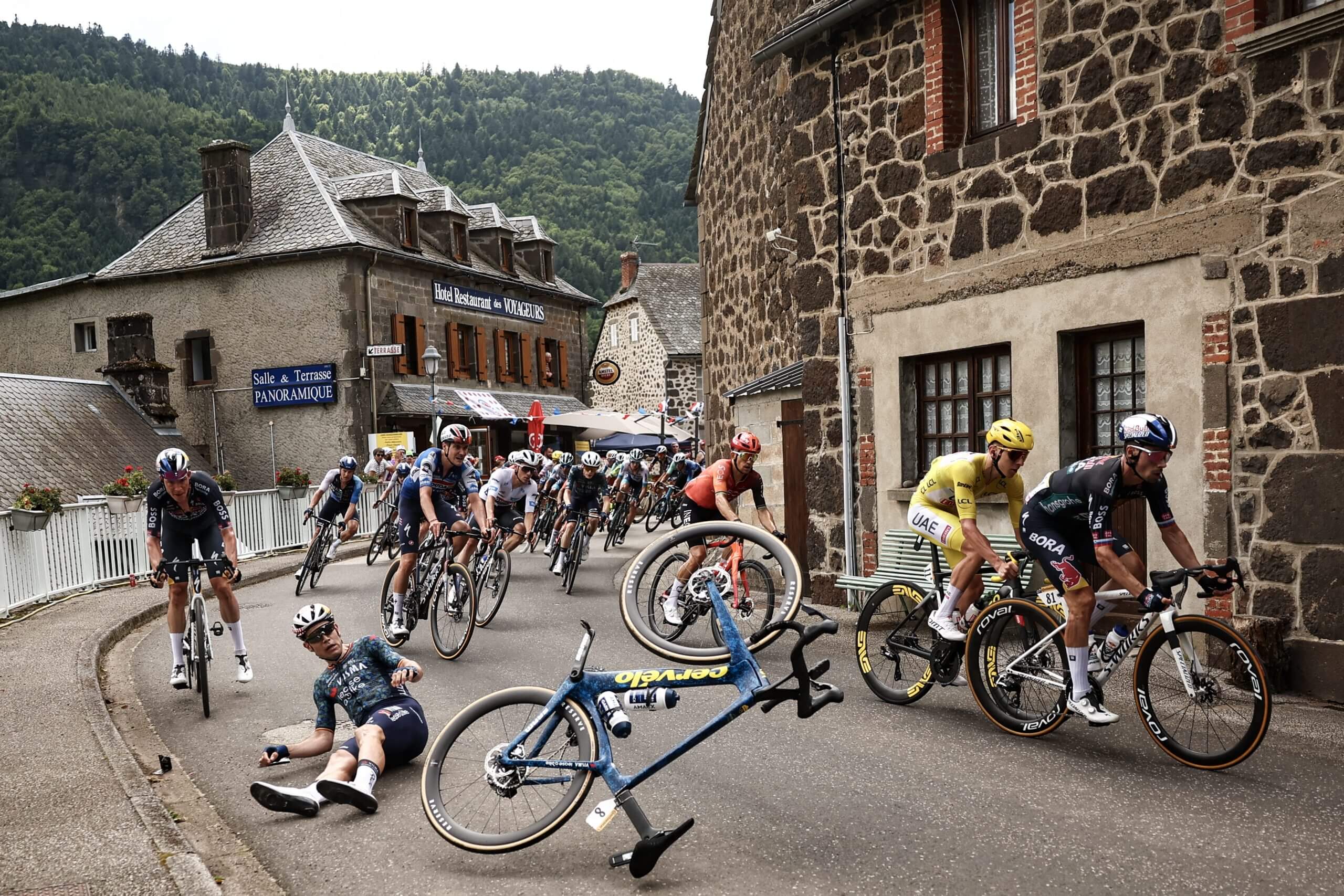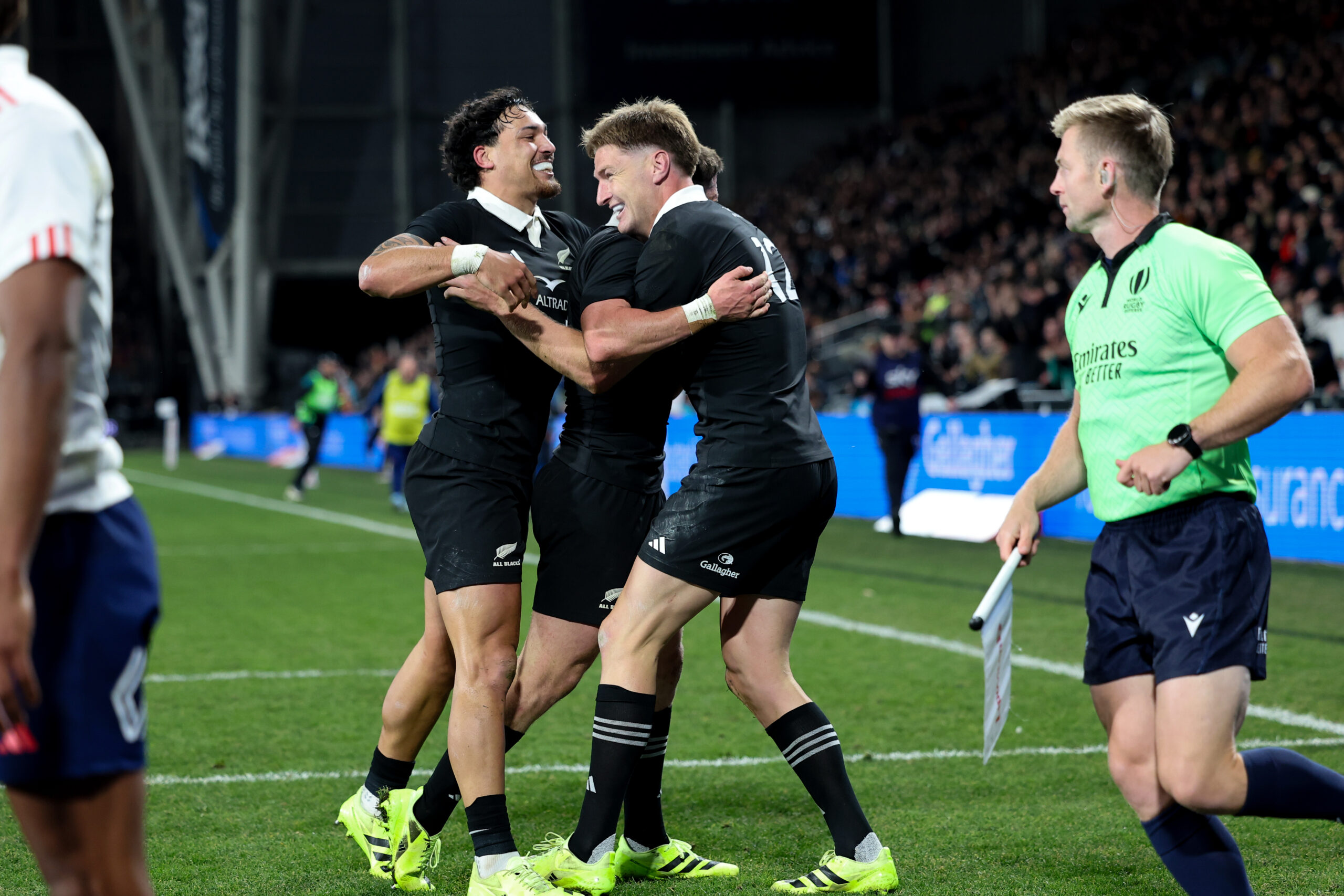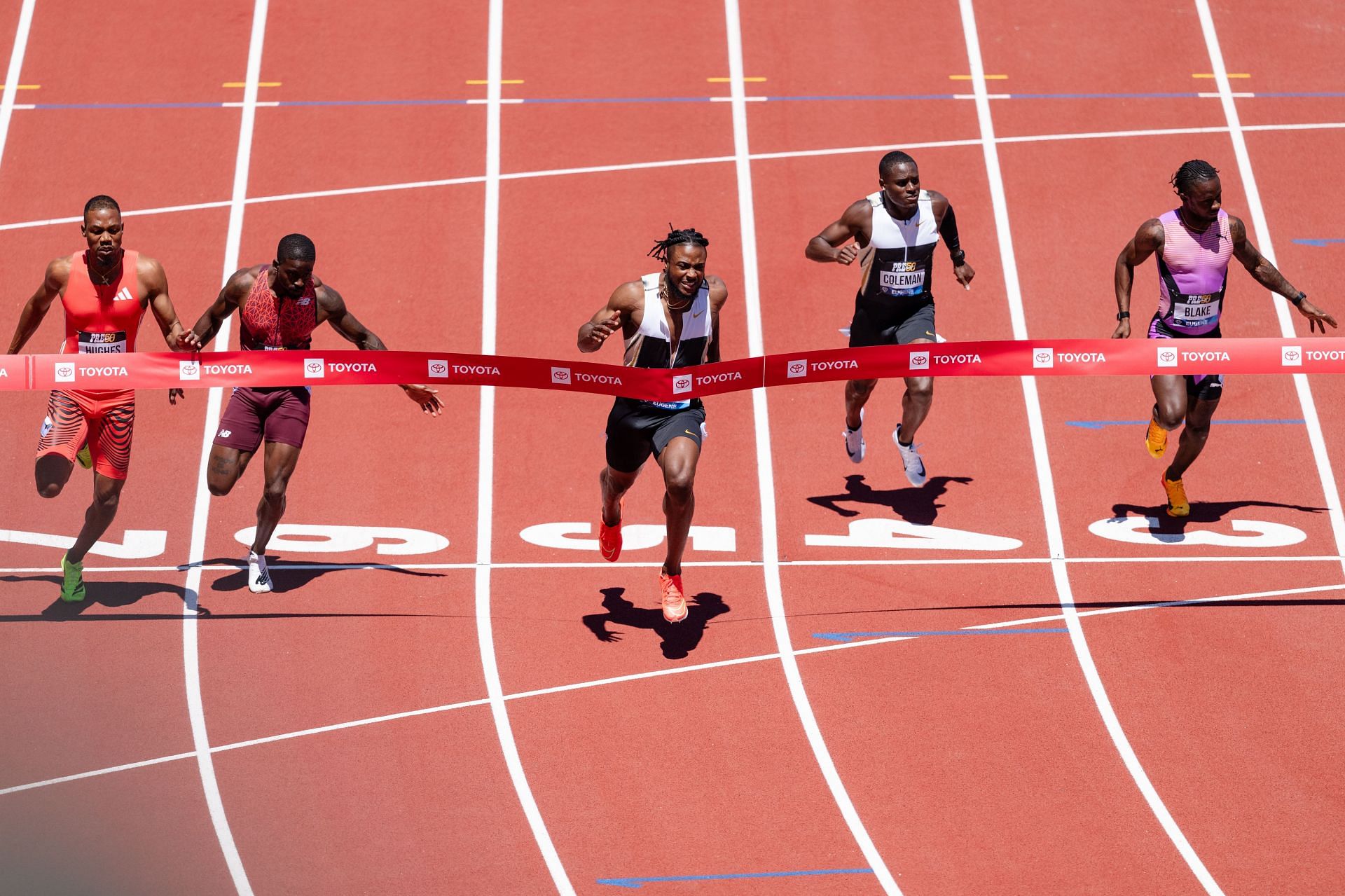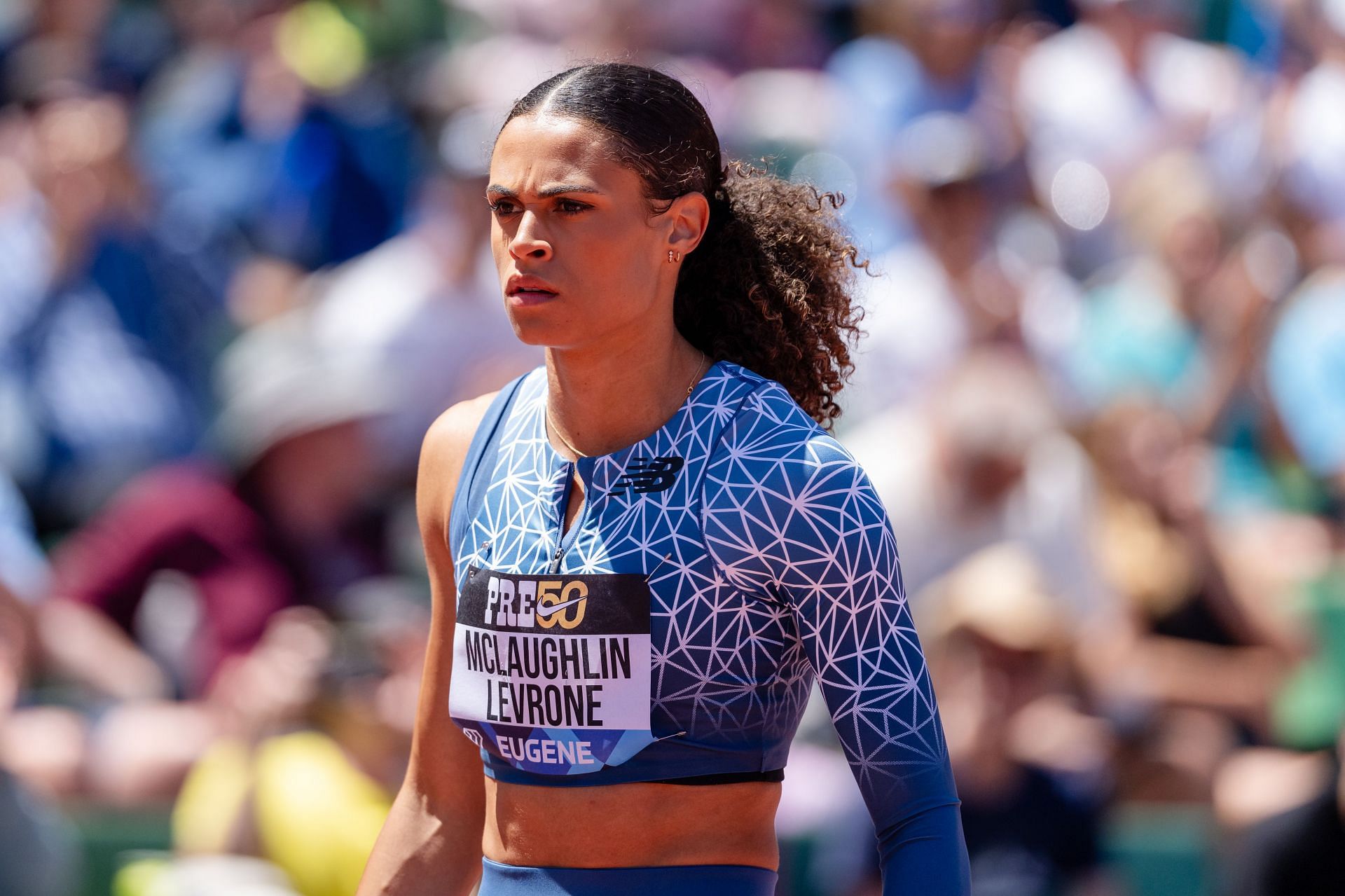The All Blacks created history on July 5, 2025, at Forsyth Barr Stadium in Dunedin, becoming the first international rugby team to reach 500 Test wins.
Take a look at the historic milestone through key moments, standout performances, and the numbers that define more than a century of All Blacks Test rugby.
Test Wins By Day
Monday: 4/4
Tuesday: 1/1
Wednesday: 7/8
Thursday: 6/7
Friday: 20/23
Saturday: 437/578
Sunday: 25/31
Note: The All Blacks only Tuesday Test was a 46-6 win against the USA at Kingsholm Stadium, Gloucester, during the 1991 Rugby World Cup. Auckland winger Terry Wright (30 Tests, 18 tries, 26 wins) scored three of the All Blacks eight tries.
Most Test Wins *
New Zealand – 500/652
France – 460/829
England – 449/806
Wales – 406/803
Ireland – 365/862
South Africa – 353/555
Australia – 347/697
Scotland – 336/760
Romania – 278/494
Argentina – 251/502
*From full-time of the All Blacks 31-27 win over France on July 5, 2025.
Milestone Wins
100th: 19-12 v Wales, Christchurch, May 31, 1969 – The All Blacks took 141 internationals to raise a century of wins. Ken Gray, Bruce McLeod, Brian Lochore and Malcolm Dick scored tries with fullback Fergie McCormick kicking seven points.
200th: 73-7 v Canada, Auckland, April 22, 1995 – The All Blacks 200th Test win came in the final season of the amateur era at Eden Park. Andrew Mehrtens (70 Tests, 967 points, 49 wins) scored 28 points on his Test debut. The All Blacks took 143 Tests to achieve their second century.
300th: 35-17 v South Africa, Wellington, July 22, 2006 – Daniel Carter (112 Tests, 1598 points, 99 wins) equalled the record of Carlos Spencer for the most points in a Test against the Springboks when he scored 25 in an imperious victory at Westpac Stadium. The third All Blacks was reached in 125 Tests.
400th: 24-16 v Scotland, Edinburgh, November 15, 2014 – Coached by Kiwi Vern Cotter, Scotland were stubborn opponents at Murrayfield, but were eventually subdued with Hurricanes teammates Jeremy Thrush and Victor Vito scoring tries. Colin Slade and Daniel Carter kicked 14 points between them. The All Blacks only took 116 Tests to reach their fourth century.
500th: 31-27 v France, Dunedin, July 5, 2024 – In a pulsating opening to the 2025 season under the roof of Forsyth Barr Stadium, a French team that had been ridiculed with odds of 8-1 nearly pulled off an upset. However, two tries from fullback Will Jordan and flawless kicking by Beauden Barrett – who went 5 for 5 for a total of 11 points – secured a narrow victory for the All Blacks, ending a three-game losing streak against France. Lock Fabin Holland, the first Dutch-born All Black, made his debut and topped the locals’ tackle count with 17. The All Blacks took 127 Tests to reach their fifth century.
Facts & Figures
1. On Saturday, August 15, 1903, the All Blacks defeated Australia 22-3 in their first Test match at the Sydney Cricket Ground. Opai Asher scored the All Blacks’ inaugural Test try and went on to score 17 tries during nine matches on the tour. Remarkably, five of his brothers also played first-class rugby. Additionally, Billy Wallace successfully kicked two goals from a mark, each worth four points.
4. The All Blacks have achieved a Grand Slam by defeating the home nations – England, Ireland, Scotland, and Wales – on the same tour in 1978, 2005, 2008, and 2010. Overall, the All Blacks have won a total of 197 matches against Six Nations countries, which include France and Italy, out of 233 matches played.
11. The All Blacks have achieved victory in 11 Tests where they did not score a try. The matches and their scores are as follows:
1. South Africa: 7-6 (1928)
2. Scotland: 3-0 (1954)
3. British & Irish Lions: 18-17 (1959)
4. Australia: 3-0 (1962)
5. Wales: 6-0 (1964)
6. France: 9-3 (1968)
7. France: 18-13 (1985)
8. Australia: 6-3 (1991)
9. South Africa: 15-11 (1996)
10. South Africa: 12-3 (2001)
11. Australia: 12-6 (2002)
12: The record for the most consecutive away wins began with a 42-8 victory over Australia on August 20, 2016, in Sydney and ended with an 18-23 loss to Australia in Brisbane on October 20, 2017. Before this streak, the All Blacks had also won seven consecutive matches during the 2015 Rugby World Cup held in England. In the amateur era, the record for the most away wins was nine, starting from a 28-13 victory against Australia on July 2, 1910, in Sydney and concluding with a 0-17 loss to South Africa at Kingsmead in Durban on June 30, 1928.
14: In 2013, the All Blacks became the first team in the professional era to win every Test match in a calendar year. They outscored their opponents 454 to 239 overall and 183 to 53 in the last 30 minutes of games. Ben Smith, who played 84 Tests and scored 40 tries, was the only player among the 42 used that season to participate in every match. He was nominated for the World Player of the Year and the New Zealand Player of the Year awards.
Also, the number of Tests Sir Fred ‘Needle’ Allen won as All Blacks coach between 1966 and 1969. He never lost a Test match as coach.
18: The All Blacks set a world record by winning 18 consecutive Tier I Test matches from August 15, 2015, to November 5, 2016. This remarkable streak began with a 41-13 victory over Australia at Eden Park and concluded with a 29-40 loss to Ireland in Chicago. England matched this tally between 2015 and 2017. Cyprus achieved 24 consecutive wins in international matches, but they were in a lower tier. The All Blacks have also managed to win every game in a season on 18 occasions.
19: The number of times the All Blacks have won ten or more games in a calendar year. The first time that feat happened was in 1995. The All Blacks won ten or more internationals annually from 2005 to 2018. South Africa (7), France (6), England (5), Australia (3), Ireland (4), Wales (4) and Argentina (2) are the other to accomplish the feat.
21: The All Blacks won 21 of 25 Tests when Welshman Nigel Owens was referee, the most wins they’ve enjoyed under any official. Owens was the first man to referee a hundred tests and called the All Blacks 38-27 victory over South Africa at Ellis Park, Johannesburg in 2013, “the finest test he refereed.” The All Blacks won 17 of 19 tests under South African Craig Joubert.
22: Number of one-point victories. The first occurred in 1928 when the All Blacks won 7-6 against the Springboks at Ellis Park in Johannesburg. This was the All Blacks’ first victory against the Springboks in South Africa. South Canterbury’s second five-eighths, Archie Strang, became a hero by drop-kicking a goal with ten minutes remaining. Worth noting, the drop goal was valued at four points from 1893 to 1948.
The most recent one-point win was a thrilling 29-28 victory over Australia in Brisbane in 2014. Malakai Fekitoa scored a try just before the final whistle, allowing Colin Slade to clinch the match with a sideline conversion, which he successfully made. Moments earlier, Slade had missed a chance to find touch from a penalty.
24: The number of official countries the All Blacks have beaten in internationals. This includes the British & Irish Lions (24 wins), World XV (2 wins), Anglo-Welsh (2 wins) and Pacific Islands (41-26, 2004).
26: Piri Weepu led the All Blacks Ka Mate Haka 26 times and won on every occasion. He led the haka 51 times overall, achieving 47 wins as a haka leader.
28: Number of wins for current coach Scott ‘Razor’ Roberston. He won 17 of 23 as a player and has 11 out of 15 as a coach.
37: The number of times the All Blacks have won Tests holding the opposition to nil. The All Blacks had 0-0 draws against South Africa in 1921 and Scotland in 1964.
41: With 41 victories in 63 Tests, Sydney, Australia, is the city where the All Blacks have achieved the most Test wins outside of New Zealand.
45: The number of wins the All Blacks have had on neutral soil in 55 Tests. The first ‘neutral’ Test was the 1987 Rugby World Cup semi-final against Wales in Ballymore, Brisbane. The All Blacks won 49-6 with Welsh lock Huw Richards receiving the first red card in World Cup history.
The All Blacks’ first Test on a neutral ground that wasn’t a World Cup fixture took place during the Bledisloe Cup in Hong Kong in 2008. In this match, the All Blacks defeated the Wallabies 19-14 after trailing by five points at halftime. Isaia Toeava was named Player of the Match, Daniel Carter successfully kicked three penalties, and both Richie McCaw and Sitiveni Sivivatu scored tries.
Their most notable victory on neutral turf came during the 2015 Rugby World Cup Final at Twickenham, London, where they triumphed over Australia 34-17.
Among individual performances, Jonah Lomu’s remarkable four-try effort against England in the 1995 Rugby World Cup semi-final in Cape Town, which ended in a 45-29 win for the All Blacks, remains legendary.
Due to the COVID-19 pandemic, the All Blacks’ 100th Test against South Africa in 2021 was relocated to Queensland Country Bank Stadium in Townsville. The All Blacks won this closely contested match 19-17 with Jordie Barrett kicking a crucial 45-meter penalty in the 77th minute.
47: The All Blacks won a world record 47 consecutive Tests at home between September 19, 2009, and July 1, 2017. The streak started with a 33-6 win against Australia in Wellington and ended with a 21-24 defeat to the British & Irish Lions also in Wellington.
Also, the number of cities in which the All Blacks have won Test matches. Rustenberg and Port Elizabeth are the only cities the All Blacks have played in and not won.
50: The record for most wins as a substitute is held by TJ Perenara, who was used as a replacement 63 times in 89 Tests.
54: The All Blacks have achieved the most wins in Rugby World Cup history, with a total of 64 matches played. They have triumphed in the World Cup final three times: in 1987, they defeated France 29-9; in 2011, they won against France 8-7; and in 2015, they overcame Australia 34-17.
56: Richie McCaw won a world record 56 out of 67 Tests away from home.
Also, the most wins by an All Black in the amateur era. Sean Fitzpatrick won 56 of his 73 Tests between 1986 and 1995. Gary Whetton won 50 of 58 Tests and Sir Colin Meads 41 of 55.
67: The All Blacks have scored one try on 113 occasions for 67 wins, 41 losses and five draws.
81: The number of Tests the All Blacks have won by 50 points or more. Ten of those are above 100.
80: The number of Test victories at Eden Park in 93 matches, the most the All Blacks have enjoyed at a single venue. On August 17, 2024, they defeated Argentina 42-10, extending their unbeaten streak at this venue to an unprecedented 50 consecutive matches, comprising 48 wins and 2 draws. Keven Mealamu participated in 23 of these victories, while Sam Whitelock also recorded 23 wins along with a 15-15 draw against the British & Irish Lions in 2017. In total, 208 All Blacks remained unbeaten at Eden Park during this streak, while 461 international opponents faced defeat there. The next longest winning streak at a single venue belongs to England, with 22 victories at Twickenham between 1999 and 2003.
87: The All Blacks have secured victories in Tests at 87 different venues. The only venues where they have not won are located in South Africa: Cape Town Stadium, Mbombela Stadium, Kingsmead Cricket Ground, Royal Bafokeng Stadium, Nelson Mandela Bay Stadium, Crusaders Ground, Boet Erasmus Stadium, and in Australia, CommBank Stadium. Overall, the All Blacks have achieved Test victories in 14 different countries.
92:Wyatt Crockett, a prop who played at least 30 Test matches, holds the highest winning percentage of any player in international rugby. He won 66 out of 71 Tests, achieving a remarkable 92.96% win rate. Fellow prop Ben Franks secured 43 wins out of 47 matches (91.49%). Crockett’s international career ended in 2017, and during that time, he also set the world record for the most consecutive Test victories, winning 32 consecutive matches from August 23, 2014, against Australia (51-20) to July 1, 2017, against the British & Irish Lions (21-24). Leon MacDonald and Ma’a Nonu are the next-best All Blacks, each with 21 consecutive victories.
93: The most wins by a single head coach was achieved by Sir Steve Hansen in 107 Tests between 2011 and 2019. Sir Graham Henry won 88 of 103 Tests between 2004 and 2011. Hansen was an assistant coach for that entire span.
97: The record for most wins by an international Test captain is held by Richie McCaw. John Smit had 54 wins in 83 internationals for South Africa, and Brian O’Driscoll 52 wins in 84 Tests for Ireland. Kerian Read had 43 wins in 52 Tests as All Blacks captain. McCaw opposed 47 different individual Test captains and beat all of them at least once.
103: The number of wins the All Blacks have had in the Tri Nations/Rugby Championship, which started as an annual competition in 1996. South Africa has 61 victories, Australia 56 and Argentina 12. The Pumas joined in 2012.
105: The number of Tests the All Blacks have won without a neutral referee. They have been beaten 43 times and drawn 10 matches with a host official.
126: The most victories the All Blacks have achieved against a single country is 126 against Australia. South Africa is next with 62 wins in 108 Tests.
131: With 131 wins in 148 Tests, Richie McCaw has the most individual wins by an All Black. Sam Whitelock (125), Keven Mealamu (114), Beauden Barrett (108), Kieran Read (107), Tony Woodcock (102), and Aaron Smith (100) also have a hundred Test wins. Wallaby George Gregan, with 93 wins in 139 Tests, is the nearest international player to 100 wins.
143: As a player, selector, and coach, Sir Wayne Smith was officially involved in 174 All Blacks Tests and won 143, including the Rugby World Cup finals in 2011 and 2015. The ‘Professor’ is presently a performance coach with the All Blacks and Black Ferns, providing outside mentoring for both teams.
145: The largest score the All Blacks have achieved in a Test win was against Japan at the 1995 Rugby World Cup. Centre Marc Ellis scored a record six tries. Southland’s first five-eighth, Simon Culhane, scored a record 45 points (try, 20 conversions) on debut.
158: The All Blacks have achieved victory in 158 out of the 169 Tests where their opponents were unable to score a try. In the 1949 series, South Africa managed to win two out of four matches without scoring a try. The last team to defeat the All Blacks without scoring a try was in 2011, when Morne Steyn (who has played 68 Tests, scored 742 points, and won 43 matches) kicked five penalties and a drop goal, leading to an 18-5 victory in Port Elizabeth. Additionally, the All Blacks have twice won four consecutive Tests while preventing their opponents from scoring a try.
198: The Raeburn Shield is a hypothetical trophy in rugby union, resembling a boxing World Title. It is named after Raeburn Place, the location of the first-ever international match between England and Scotland on March 27, 1871. The holder of the shield competes for it in every fixture. The All Blacks have won the shield more than any other country.
207: Away wins from 297 Tests
210: The All Blacks won 210 of their 295 Test matches (71.18%) in the amateur era (1903-1995).
248: The All Blacks have won 248 of their 300 home Tests. They have outscored the opposition 8870 to 3757.
Also, Gilbert Enoka (ONZM) served as the All Blacks’ mental skills coach from 2000 to 2023. During his tenure, he achieved an impressive record, winning 248 out of 303 Test matches, including the Rugby World Cup in 2011 and 2015. In 2010, Enoka established a groundbreaking ‘Mental Analysis and Leadership Group’ within the All Blacks, incorporating ideas from various sports and neuroscience, all aimed at gaining a competitive edge.
290: The All Blacks have won 290 of their 357 Test matches in the professional era (1996-present)
335: The number of Tests the All Blacks have won by more than ten points.
395: The number of Tests, from 493, the All Blacks have won with a neutral referee.
743: World Rugby introduced official weekly world rankings just before the 2003 Rugby World Cup. The All Blacks have held the top position for an unrivalled 743 weeks with eight tenures at one. South Africa is the next-best team with 276 weeks at the top. From November 16, 2009, to August 19, 2019, the All Blacks maintained their number one ranking for 509 consecutive weeks. During this period, they played 128 Tests, achieving 112 wins, 12 losses, and 4 draws. Additionally, from June 14, 2004, to October 22, 2007, the All Blacks played 47 games while ranked as the world number one, winning 41 of those matches.
Find out where to watch All Blacks v France around the world HERE.
 Getty Images
Getty Images
